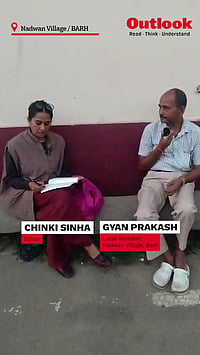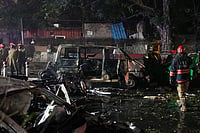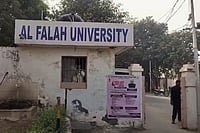
The nature of Al Qaeda operations is best illustrated by the example of Amjad Hussain Farooqi, who had masterminded two failed assassination attempts on Gen Pervez Musharraf in Rawalpindi. Killed on September 26, 2004, after a five-hour gunbattle with security forces in Nawabshah, Sindh, Amjad had been a member of the transnational terrorist organisation, Harkat-ul Jehad al Islami (HUJI) and was linked with Al Qaeda and Lashkar-e-Jhangvi (LeJ), a violent group of Sunni extremists. But less widely known was his role as a hijacker of Indian Airlines flight IC-814 in December 1999.
Investigations into Amjad's involvement in the assassination attempts revealed his ties with Al Qaeda's new operational chief Libbi. This link confirmed fears of the US intelligence sleuths that many of the religious extremists in Pakistan are working in tandem with Al Qaeda operatives, making them difficult to be identified and segregated. Such links Libbi has exploited to orchestrate some major terrorist activities in Pakistan, including a failed suicide attack on Prime Minister Shaukat Aziz in the Fateh Jang area of Punjab in July 2004.
Pakistani police officials cite the example of the group headed by Attaur Rehman, who graduated from Karachi University, to illustrate how Al Qaeda operates through small independent groups of 5-10 members. Attaur was associated with Islami Jamait Tuleba, student wing of the Jamaat-e-Islami. He later broke away from the Jamaat to form his own militant group, Jundullah (Army of God), which draws its cadres from the professional classes.
Although Jundullah reportedly receives orders from Osama's senior followers, it has no direct association with Al Qaeda or any other group associated with the network. That's why, police officials say, the arrest of Attaur and his accomplices could not lead them to other Al Qaeda cells. They describe Jundullah as a well-entrenched Al Qaeda cell comprising a few dozen hardcore militants, most of them in their 20s and 30s. "Jundullah is one of the new and the most fierce of the militant groups behind the recent spate of violence in Karachi," a police official told Outlook. The terror group hit the headlines after a daring attack on the motorcade of Karachi corps commander Lt Gen Ahsan Saleem Hyat in June 2004. Now serving as vice-chief of army staff, Hyat narrowly escaped death, but 11 people, including eight soldiers, were killed on the spot.
Sources say that some 20 cells, largely splinters of banned militant outfits, are operating in Karachi, which has become the main centre of terrorist activities in the recent past. And many of those involved in the recent terrorist attacks in the city had received training in camps in Waziristan. These splinter groups are trying to cash in on the rising popular disaffection against the domestic and foreign policy decisions of the Musharraf government. And Al Qaeda is cashing in on them to do what they can't as a cohesive group.

















